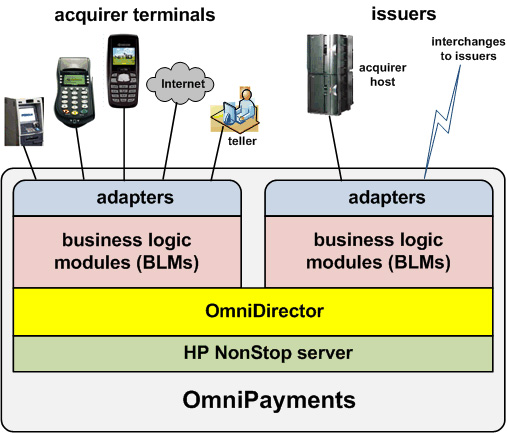The OmniPayments architecture is based on the modern Service Oriented Architecture (SOA). SOA permits new functionality to be added easily to OmniPayments in order to meet the specific needs of customer banks.

The core of OmniPayments is a set of Business Logic Modules, or BLMs. Each BLM is tasked with enabling a specific service for OmniPayments. For instance, OmniATM manages ATMs, OmniPOS controls POS devices, and OmniAuth provides authorization services.
Adapters create connections between the external devices and the BLMs that manage them. OmniPayments provides Acquirer Adapters for ATMs, POS devices, IVR systems, the Internet, and bank tellers. Issuer Adapters are provided for local host communications and for the variety of financial interchange switches with which OmniPayments must interface.
Traffic between acquirer BLMs and issuer BLMs is routed via OmniPayments’s OmniDirector. OmniDirector is a rules-based routing engine that routes on-us transactions to the bank’s core systems and not-on-us transactions to the appropriate interchange switch. It provides format conversion between different message protocols and is also responsible for much of OmniPayment’s logging functions. OmniDirector also manages the failover/retry mechanisms in OmniPayments.
OmniPayments runs on an HP NonStop server. All processes are persistent, and OmniPayments will automatically restart any process that aborts. All database functions such as logging, card parameters, and the ODS use the NonStop SQL/MP relational database.